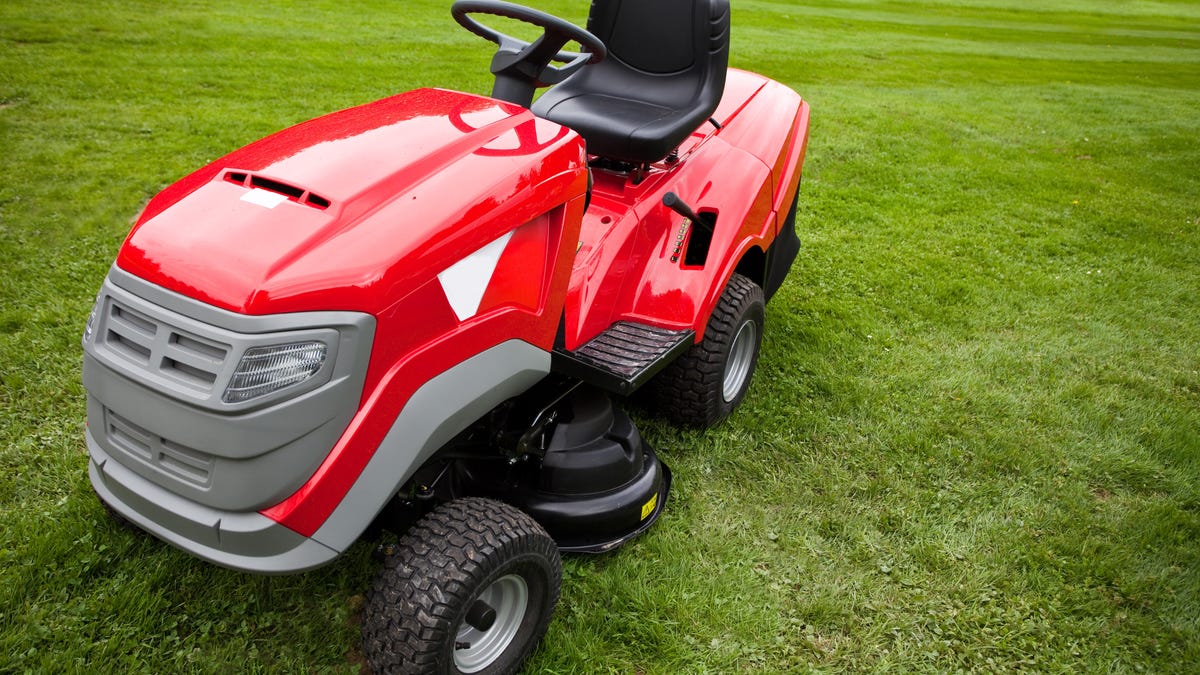 Why You Can Trust CNET
Why You Can Trust CNET What to know before buying a riding lawn mower
Before you splurge on a new riding lawn mower, read this guide to figure out what type of machine is best for your needs.

Keeping your yard looking sharp is an important part of homeownership. A well-maintained lawn not only enhances your home's curb appeal, it could also increase its value. That's why it makes plenty of sense to invest in a decent lawn mower. With robot mowers still struggling to gain traction, your choices are mainly split between walking models and riding models.
A walking lawn mower is perfect if you have a small yard. However, if your yard exceeds a quarter of an acre, or you're looking to spend less time mowing it, then it's worth considering the upgrade to a riding lawn mower. This guide will help you find the right one by examining factors like your lawn size, type of terrain and special features to look for.
How big is your lawn?
The size of your lawn is a vital factor when you're choosing a lawn mower. After all, if you've got a large lawn encompassing multiple acres, then your mower will need the chops to handle the job well while saving you time.
One effective way to measure a mower's capabilities is its cut width, which tells you how wide a strip of grass it can clear in a single pass. The bigger the cut width, the more grass you'll be able to mow at once.
A yard less than 1 acre would do well with a cutting width of 30 to 42 inches. Two popular models that fit the bill are the Cub Cadet XT1 Enduro and the Craftsman T210 Turn Tight. Both mowers have 18-horsepower gas engines, hydrostatic transmissions and a cutting width of 42 inches.
Lawns 5 or more acres in size will typically require a cutting width of at least 54 inches -- otherwise you'll be out there mowing all day. One such model is the Troy-Bilt Super Bronco 54 XP. With a 24-hp gas engine and a broad, 54-inch cutting width, it should make fast work of big lawns.
Study your property's terrain
Does your lawn have lots of obstacles to navigate? If it does, consider a riding mower with a tight turning radius, which is helpful for steering around tight spots and corners. A tighter turning radius makes for smoother handling, and it'll help to ensure a uniform cut. A mower's turn radius is usually listed in inches with smaller figures describing tighter turns.
Meanwhile, if your yard contains an abundance of items like flower beds or shrubs, then a zero-turn mower might be more your speed. With a zero-turn mower, you'll use a pair of levers instead of a steering wheel to maneuver. Zero-turn mowers spin on a dime, with an effective turning radius of 0 inches. They have a high forward speed, too. That allows them to whip around tight edges while still providing a smooth cut.
One example of a zero-turn mower is the John Deere Z355R. It's equipped with a 22-hp gas engine and has a top speed of 7 miles per hour.
Carts and attachments
Riding mowers can do more than just cut grass. For instance, some can haul extra items. You can hitch stuff like dump carts, giving you the option to move lawn debris and other items with ease. Other handy options include snow plows and even snowblower attachments to deal with tough winters.
Comfort options
There are comfort features you can look for in your next mower, too. Seating is a primary point of focus, especially if you'll be riding on your mower for hours at a time. If long rides like those are a concern, look for a mower with high-back seats, lumbar support and armrests, as they can help keep you comfortable for a longer ride.
Some riding mowers also include cup holders to keep you hydrated while you're out mowing. There are also options for extended leg room, rubber foot pedals and much more.
Other features and capabilities
As you shop, be sure to factor in engine design, as well. Single engines tend to be the least expensive and are perfect for smaller yards. However, if you have a yard with multiple acres, then you should consider a V-twin engine. Not only does a V-twin provide faster mowing, it helps you navigate uneven terrain with ease.
Some riding lawn mowers can also mow in reverse -- a helpful feature if you need a different angle when cutting around obstacles. Additionally, cutting in reverse often helps to smooth out spots over hilly terrain.
Find the right balance
So now you know some of the key things to consider when choosing a lawn mower. The final step is to weigh the features you want against your budget. Also, keep in mind that some manufacturers such as John Deere offer financing incentives. Better yet, if you pay off the loan within the promotional period, you're not on the hook for interest charges.
Financing like that could also give you the flexibility to purchase a more powerful lawn mower, or even the machine of your dreams. And with regular maintenance, your lawn mower could provide many years of valuable service.
Read more: